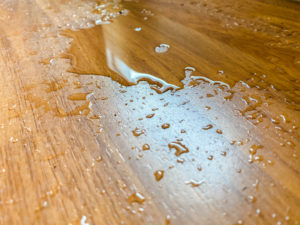Water Damage Restoration for Hardwood Floors
Water Damage Restoration Tampa
 Excess water in your home can wreak havoc on your floors, particularly if you have hardwood floors. If your floors have been affected by water damage, you may be wondering if there is anything you can do to save them. The good news is that there are steps you can take to increase the likelihood of salvaging your water-damaged wood floors. Here are some tips on how correctly handle water damage restoration for hardwood floors:
Excess water in your home can wreak havoc on your floors, particularly if you have hardwood floors. If your floors have been affected by water damage, you may be wondering if there is anything you can do to save them. The good news is that there are steps you can take to increase the likelihood of salvaging your water-damaged wood floors. Here are some tips on how correctly handle water damage restoration for hardwood floors:
1. Remove the water as soon as possible
The faster you can remove the water, the better your chances of saving your floors. If there is a significant amount of water present, consider calling in a water damage restoration professional to help you get rid of it quickly. Even if your wood floors have a good finish, they are porous, which means that water can seep into the planks and subfloors. Removing the water as quickly as possible can prevent further damage.
2. Clean your floors
After you have removed the water, it is important to clean your floors thoroughly. Use a mild detergent and a disinfectant to get rid of any dirt, mud, silt, or organic material that could lead to mold growth. Be sure to rinse the brush you are using frequently to avoid spreading contaminants. If you notice any areas with signs of mold growth, seek professional help immediately to prevent the problem from spreading.
3. Dry your floors
Thoroughly drying your floors is critical to preventing further damage. Use fans to increase air flow, and consider using dehumidifiers to remove excess moisture from the air. It is important to allow your wood floors to dry slowly and steadily to prevent cracking, bending, and warping. Avoid using heat to dry hardwood floors, as it can cause cupping, where the sides of each plank pull up and away from the floor. Instead, allow them to dry slowly so they release moisture at a rate that will not damage the planks.
4. Sand and seal your floors
Once your floors are completely dry, you may need to sand them down to remove any damage. You may also need to face-nail areas that have risen up from the subfloor. After sanding and prepping your floors, you can refinish and seal them. Sealing your floors is important to protect them from future water damage and to keep them looking their best.
If you are overwhelmed by the process of salvaging your water-damaged wood floors, or want to ensure the best possible water damage restoration for your hardwood floors, do not hesitate to seek help from a professional like Wright Way Cleaning and Restoration. Our water damage restoration specialists are trained to handle water damage from any surface, including hardwood floors. We will respond quickly to get the water removed as soon as possible. Do not risk causing further damage to your floors, and instead leave water damage restoration for not only your hardwood floors, but also your entire home, to the professionals.
